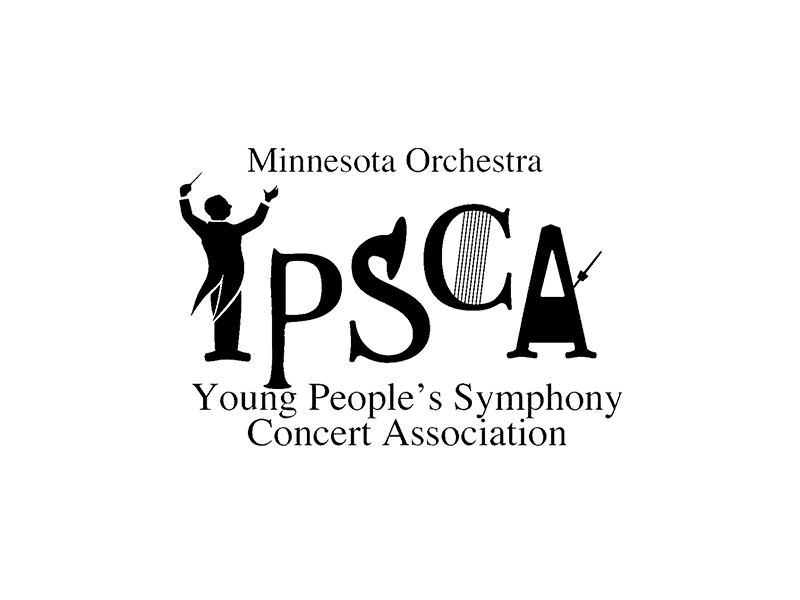
Concert Activities
Meet the Instruments
Get to know the families and instruments of the orchestra in this Young People’s Concert Experience recommended for grades 1-6. Enjoy videos featuring performances by Minnesota Orchestra musicians and commentary from host Sarah Hicks, instrument demonstrations, information about the featured music and composers, and multisensory activities from Twin Cities partner organizations exploring the “Meet the Instruments” theme.
About the Composers
Peter Ilyich Tchaikovsky
Peter Illyich Tchaikovsky grew up playing the piano and became a lawyer. His love for music caused him to go back to school to become a composer. His skill impressed his teachers so much that they offered him a job at the Moscow Conservatory as soon as he graduated. Tchaikovsky wrote hundreds of works but his most famous works are his three ballets.
Tchaikovsky wrote this Serenade in 1880 and it was one of his favorite pieces which he composed. The first movement, which you will hear a part of, was meant to be an homage to one of his favorite composers: Mozart. The portion you will hear opens with a flowing melodic section for full string orchestra, followed by a contrasting section with fast notes and accents (notes played with an added emphasis), and finally, a beautiful slow section that was used to introduce the full movement.
Wolfgang Amadè Mozart
Wolfgang Amadè Mozart was part of a very musical family; his father was a musician who taught Wolfgang and his sister—Maria Anna—how to play the piano and the violin. By the age of five Mozart was writing music and he wrote his first symphony at the age of eight.
In Mozart’s time, a serenade was typically a light-spirited piece of music used in court festivities or other public occasions; in short, party music. However, Mozart wrote this serenade in a minor key, giving it a serious mood, which must have shocked the attendees that night. You will hear part of the first movement. The piece is divided into two sections, each with its own main melody. In each section the music alternates between soft, sweeping sounds, and loud, dissonant sounds – leading up to an exciting finale.
Kari Sundström
Kari Sundström has been a member of the Minnesota Orchestra since 1996. In recent months, with the full Minnesota Orchestra not performing together due to the COVID-19 pandemic, Sundström has turned to composing as a creative outlet—picking up an interest that extends back to his Julliard years. In composing this work, he found inspiration from the art world as well as the music world. “I soon realized that music really speaks to me visually. The Four Portraits are not referring to any specific paintings; I will leave that to your imagination.”
Sundström left many elements of the work open to the interpretation of the performers—intentionally leaving out markings of dynamics, articulations and tempos. “Music speaks so differently to each one of us. I am looking for that collaborative interaction between the musicians.”
Devonté Hynes
Devonté Hynes has found success in multiple musical genres, including R&B, electronic, indie rock, funk and classical. In September 2018 he collaborated with Chicago-based Third Coast Percussion ensemble and the Hubbard Street Dance Chicago to create an evening of percussion music and dance that included Perfectly Voiceless.
Perfectly Voiceless includes pitched—such as the marimba, vibraphone and glockenspiel—and non-pitched instruments like the Chinese jing cymbal, tamborim and wood block. Hynes uses all of these instruments and short repeated patterns to focus your attention on the sounds themselves instead of a melody that you can sing.
- BORN: December 23, 1985, London, England
Guide to the Orchestra
See instruments in action, as demonstrated by Minnesota Orchestra musicians.

Find That Instrument
Get to know how different instruments sound and how they can make you feel in this game from Toneworks Music Therapy Services.

Design a Costume and Create Your Own Performance
Explore the relationship between sound and movement with this activity from the Walker Art Center.

Make an Abstract Drawing
Create your own abstract works of art inspired by the sounds of Meet the Instruments with this activity from the Walker Art Center.
Sponsored By
Thomas* and Mary Lou Detwiler
Mary Ann Feldman Music Education Fund
Corporate Sponsors





